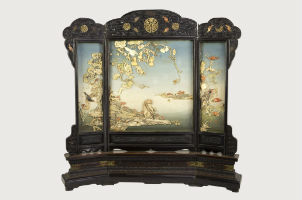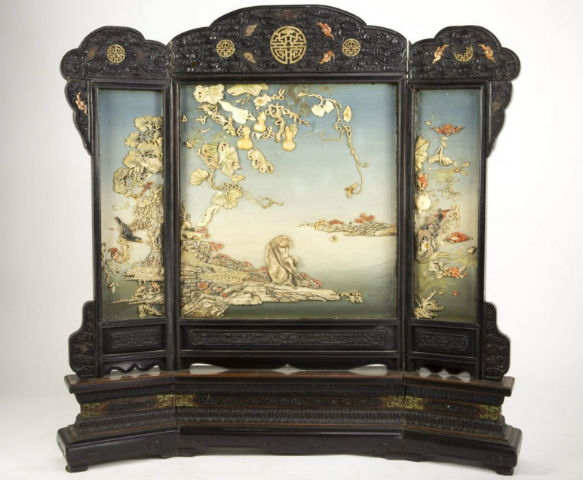
NEW YORK – Antique table screens, decorated with important and auspicious symbols, were one of the most important objects in a scholar’s studio before the Qing dynasty. A table screen was placed on the painting table in front of a window to shield the desk from breezes. Later, they were prized possessions in affluent homes in China, and today collectors desire them for their craftsmanship and elegance.
Most table screens had porcelain plaques but many were jade or inlaid with jade inlaid. Some were made of wood with carved hardstone appliques or they were carved out of inkstone or soapstone. They also often had porcelain plaques either decorated in blue and white or famille rose enamels. Hardstone carving is among China’s most long-standing artistic traditions, going back 8,000 years. As the most highly revered stone in Chinese culture, jade was preferred but other hardstones were carved as well.
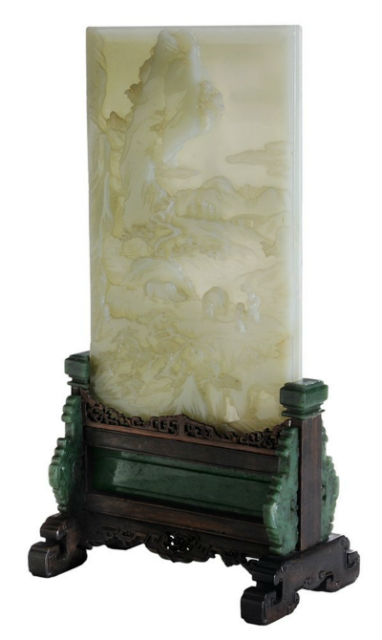
“By the Ming (1368–1644) and Qing (1644–1911) dynasties, a jade table screen, often with decoration on both sides and resting on a wooden stand, had come to represent the height of fashion among China’s educated elite,” said an expert from the Asian Art Museum in San Francisco, which has several renowned examples in its collection.
A white jade table screen in the museum’s collection is decorated on one side with images of treasures favored by scholars while the reverse side depicts three old men traveling amid multistoried temples in tall mountains. They are recognized as Taoist immortals by what they carry in their hands: a wish-granting wand (ruyi), a fungus of immortality (lingzhi), and a peach, which represents long life. White jade was so highly regarded by the Qianlong emperor that it became popular for ritual and court arts.
At the Museum of Fine Arts, Houston https://www.mfah.org/art/detail/84111, a table screen from the Ming dynasty bears decorative carvings on both surfaces. On one side, a qilin—a mythical beast similar to a unicorn—is set against a rocky landscape. The other side features court dignitaries pursuing various scholarly pursuits. Qilins are found frequently in Chinese art, poetry and mythology.
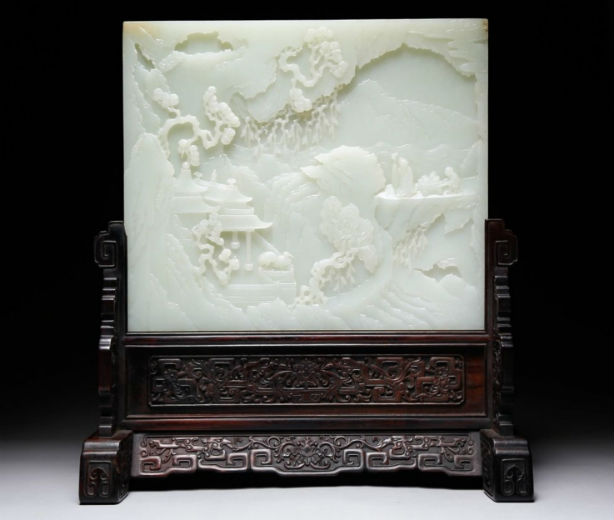
“They were associated with the wish to produce male heirs and were symbolic of high military ranking. The qilin was regarded as a benevolent creature representing good fortune, prosperity and devotion to family. According to legend, a qilin appeared to the mother of the great sage Confucius shortly before he was born,” according to the museum catalog entry. “On the other side of the screen, members of the intellectual elite relax in an idyllic setting of gardens and pavilions framed by high trees and mountain peaks. The figures participate in the most important accomplishments of the Chinese scholar: poetry, painting, music and chess.” This screen is a form of dark soapstone called steatite.
Other table screens have been embellished with such imagery as lotus (symbolizing purity), dragons (strength or power and good luck) or scrolling clouds (good fortune).
Isadore “Izzy” Chait, founder of I.M. Chait Gallery/Auctioneers in Beverly Hills, Calif., has seen — and sold — several terrific table screens in his 50-plus years in business. “Chinese table screens were used mainly for ‘inspiration and contemplation.’ They served the same purpose as would jade mountains,” he said.
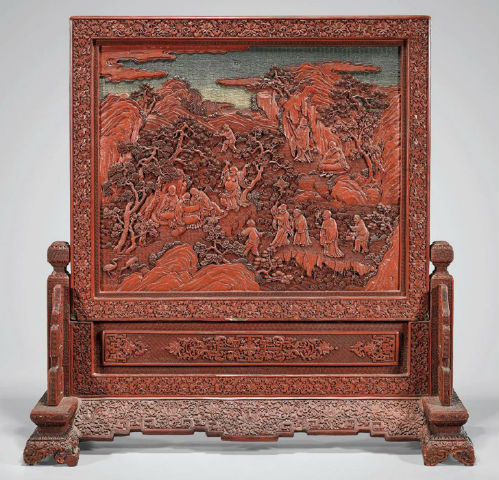
Among the fine pieces I.M Chait has auctioned, a standout is an important Qianlong period cinnabar lacquer table screen that more than doubled its high estimate when it achieved $90,000 in May 2017. One side depicts Immortal figures and attendants engaged in various Taoist studies and practices while the other side shows figures carrying auspicious lingzhi, gourds and peaches along the shore of a tree-lined lake.
“The screen would inspire tranquility and peace as well as benevolence. The subject matters would vary hugely,” Chait said. “So while you composed poetry or music you would look at the screen, it would inspire you or bring you to a tranquil space.”


